Table of Contents Show
Showering in an RV isn’t the same experience you would have in your home. While it is still pretty straightforward, you’ll want to keep a few tips in mind.
There are a few problems showering in an RV can cause. For example, the extra moisture in your RV can cause long-term issues. Or not knowing how to conserve water or when to empty your tanks can make the whole experience frustrating.
Knowing how to properly shower in your RV can prevent any issues during the camping trip. Let’s dive into the mistakes people make when showering in an RV, so you can learn from them!
How Many Gallons Do You Use When Showering in an RV?
Most RV water heaters only hold 6 gallons unless you have a tankless water heater. Tankless options should provide unlimited hot water, as long as your propane and water source hold out.
However, this amount depends on how long you shower. A military shower consists of rinsing off, turning the water off, then soaping down. Then you turn the water on for a final rinse to conserve the amount used.
So at the end of both extremes, an RV shower may use 1 to 6 gallons (unless you like cold showers). Most campers use between 2 and 5 gallons.
And remember, it takes about 25 to 45 minutes for another 6 gallons of water to heat up. So if you have multiple people in your camper, it’s important to do the math.
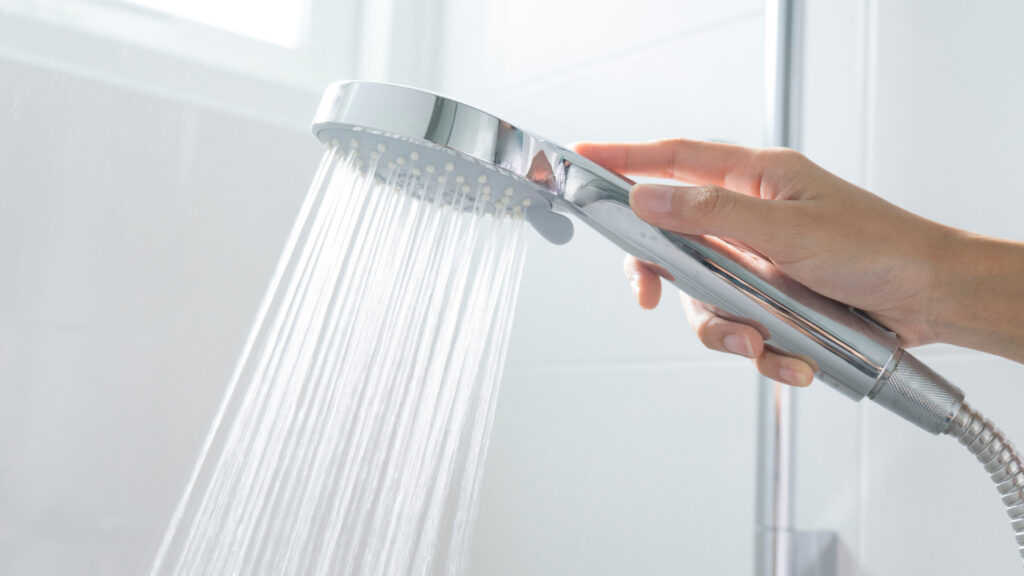
Can You Shower in an RV Without Hookups?
As long as you have a full fresh water tank, a water pump, and a water heater, you can shower in an RV without hookups. Almost all RVs are built to be self sustaining, meaning you don’t need hookups to use them.
However, many RVers showering in an RV without hookups will plan out their water usage before camping. They may allocate a certain amount of fresh water for drinking, cooking, washing dishes, and showering by the number of people camping.
The size of a full fresh water tank will tell them how much water they have to work with. And most water heaters use propane or electricity for doing dishes and showering.
So the amount of propane will affect your water use. The fuel needed to run a generator varies. Finally, the size of the gray water tank is vital because all shower, dish, and sink water end up there.
Obviously, with this planning, boondockers must ensure that their freshwater tank is full and their gray and black waters tanks are empty before heading out to camp.
They may also need to top off their propane tank. They’ll need it to heat the water and run a furnace on cold evenings. You can shower in an RV without hookups; just plan ahead.
Keep in Mind: Are you new to the boondocking world? Then checkout our Dry Camping and Boondocking Tips For an Effortless Trip!
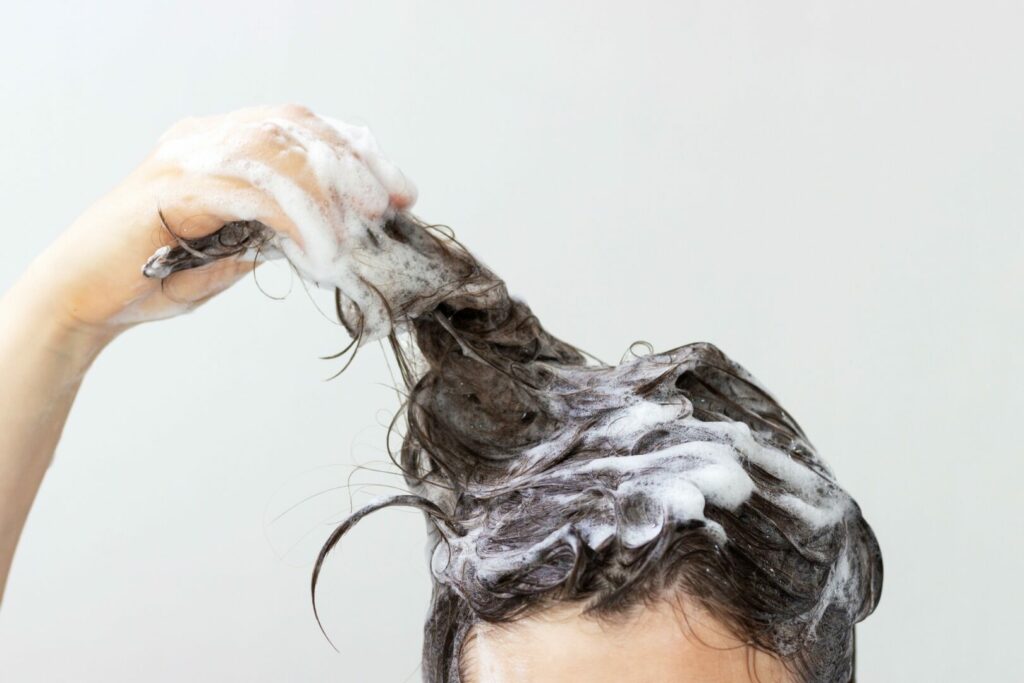
Where Does Shower Water Go in an RV?
Water from a shower or sink drains into an RV gray water tank for later disposal. Gray water is considered ‘safe’ water, as it doesn’t contain urine or fecal matter, like black water from a toilet.
The gray water may have some bacteria from food and soap particles washed down the kitchen sink, but you can also filter and reuse it to water lawns or for irrigation purposes.
In some states, RVers are allowed to empty their gray water tanks on the ground as long as it doesn’t contain food particles.
This includes water from showering, the washing machine, or the bathroom sink.
However, kitchen sink water is considered black water in California because of the bacteria it may contain.
Don’t Make These Mistakes When Showering in an RV
Remember these rules of thumb when using your RV shower. Some involve water conservation, while others help avoid future problems.
Using a Standard Showerhead
- ✅ RV / Camper handheld shower head with hose and on off switch (small water flow), included all necessary accessories
- ✅ Water saving shower head with bigger switch, easy to control the spray from high to small to save water ( ≤ 0.35...
You should always use a water-conserving RV showerhead. It will have a shut-off valve to turn off the water at the head, not at the faucet.
They also produce less water when on, but many still provide decent water pressure for showering.
Not Using Your Shut-off Valve
- EASY WATER FLOW ADJUSTMENT: our shower flow restrictor allows for regulating water volume or completely shutting off...
- CONVENIENT WATER SAVER: great addition to a high flow shower, helps reduce water pressure, no more wasting hot water...
If your RV has a showerhead with a shut-off valve, use it! The valve will save the hot water while you wash.
Then you can turn it back on to rinse off without waiting for warm water again.
Conserve water when showering in an RV by turning it off at the head. This way you don’t have to turn off the hot and cold handles each time, ruining the perfect temperature you already set.
Not Turning on Water Heater Sooner
Most water heaters need a little time to warm up. Conventional and tankless water heaters need at least 25 minutes to bring the water up to temperature.
Be sure to plan your shower. You don’t want a cold shower right off the bat. You also don’t have to waste water as it warms up.
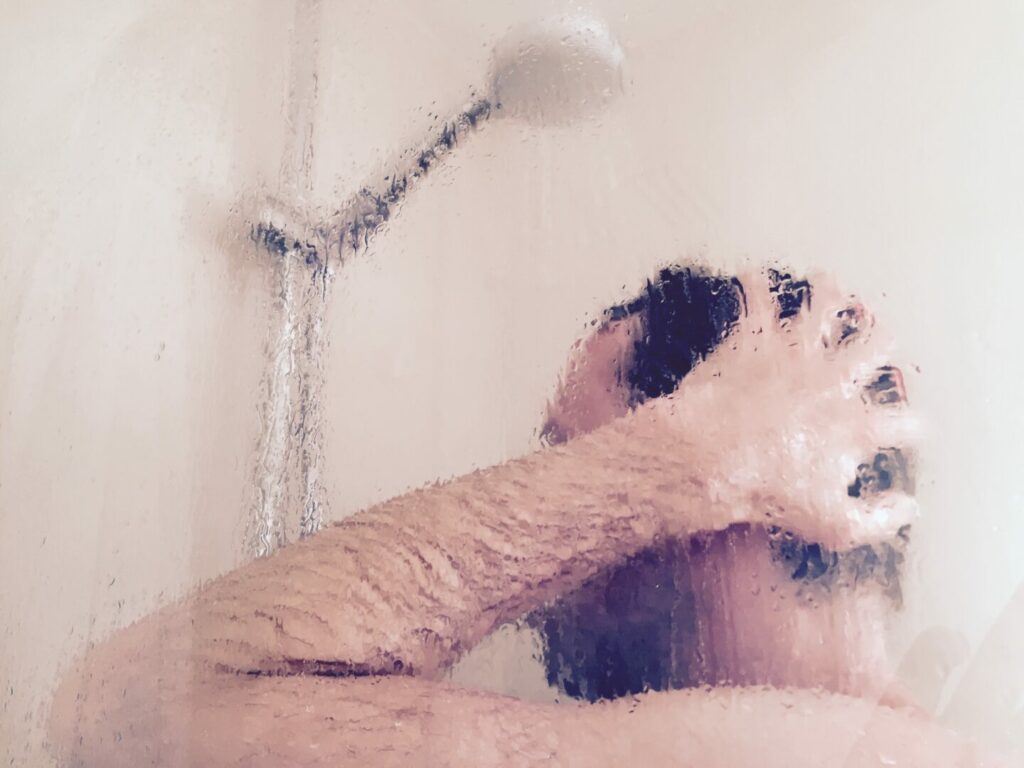
Forgetting to Empty Grey Tanks
Gray tanks are usually much smaller than freshwater tanks. Although you may have plenty of water with which to shower, you may not have enough room in the gray tank for it to drain.
You will discover this as the water backs up on the floor of your RV shower.
So empty your gray tanks before your camping trip and track how much water you use.
Keeping Your Roof Vent Closed
Running hot water inside an RV builds humidity, so opening your roof vent will help alleviate the moist air as you shower.
Turning on the vent fan while showering in your RV allows the warm air to escape. Then leave the fan on for an additional 20 minutes to avoid problems with moisture and mold down the line.
Keep in Mind: If you’re looking to upgrade your roof vent, we highly recommend checking out The Best RV Vent Fans You’ll Actually Love!
Stay Clean and Avoid Mistakes When Showering in an RV
Now that you know the ins and outs of showering in an RV, there should be no dirty campers at your campsite. Plan ahead when filling and emptying water tanks.
Avoid moisture build-up by using the roof vent and turn on your water heater 25 minutes before you want to shower.
And teach your campers about water conservation, especially if you plan on boondocking.
You can stay clean and avoid these mistakes when showering in an RV. Now you can have a clean and successful camping trip.
Last update on 2025-01-19 / Affiliate links / Images from Amazon Product Advertising API




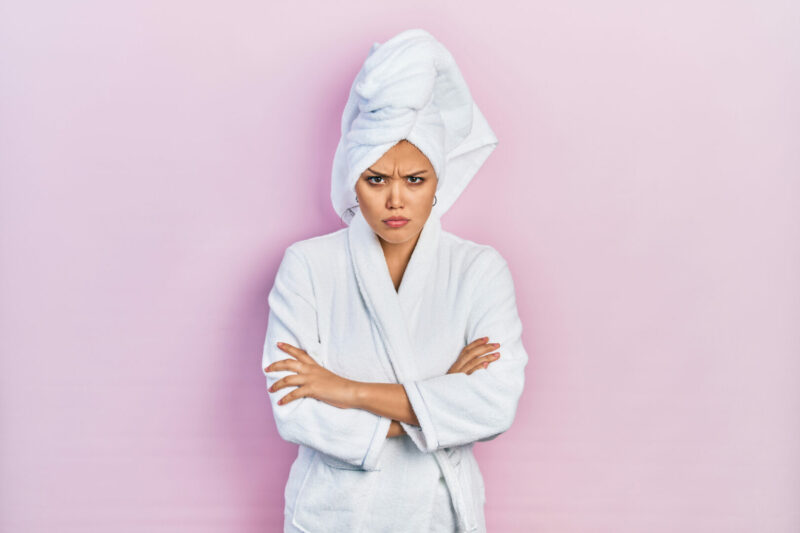


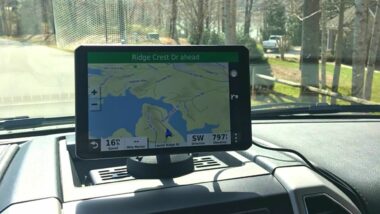
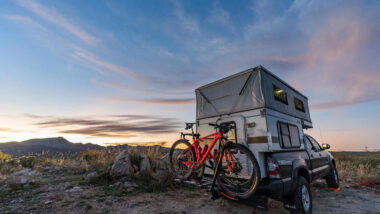
Great article. One thing that will help with hot water supply is using electric and gas at the same time on the water heater.
I totally disagree with your advisory that tinted windows are good for privacy! At night when the lights are on in your coach, you had better have curtains to block views from outside persons, otherwise they can see everything!